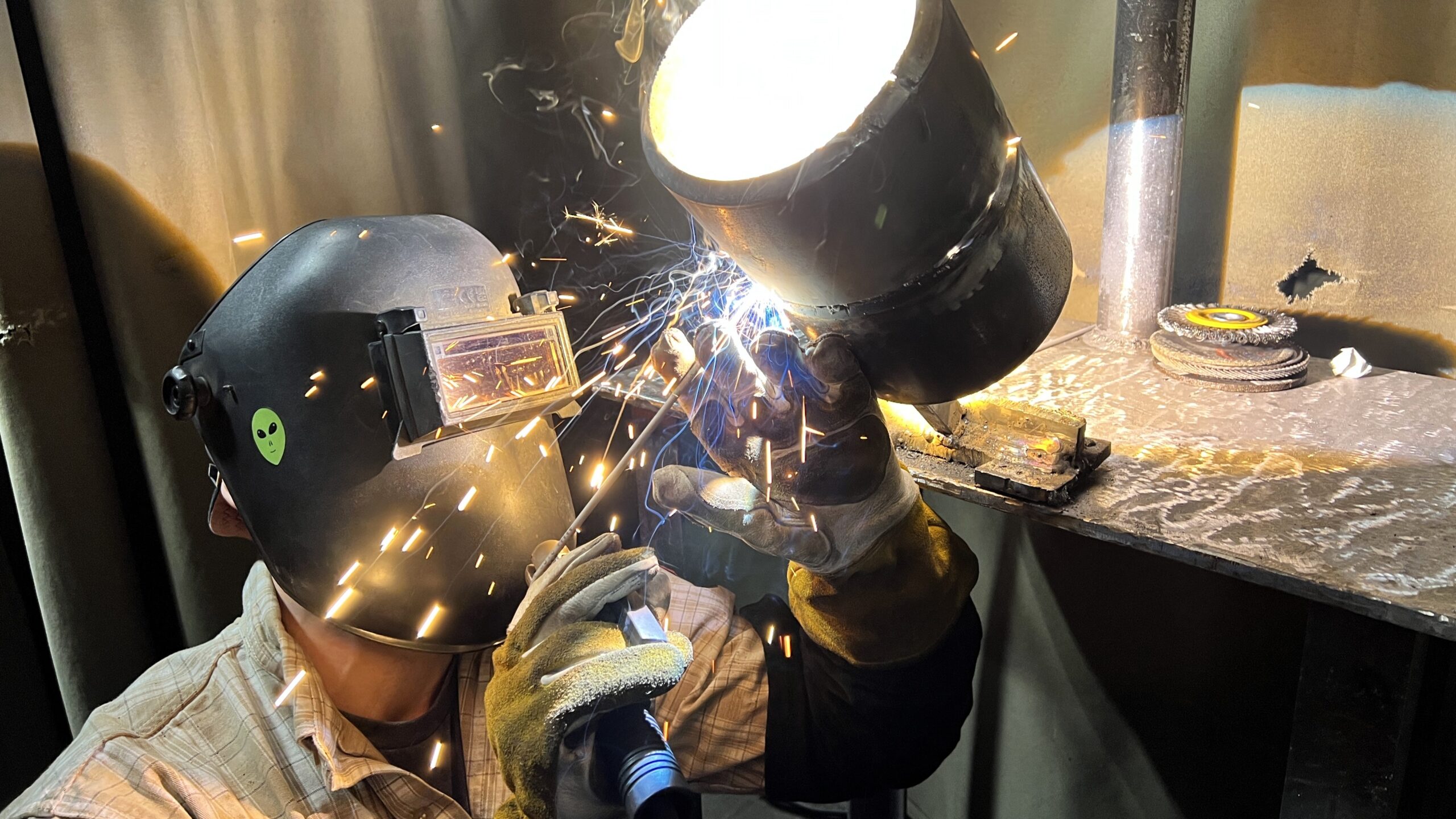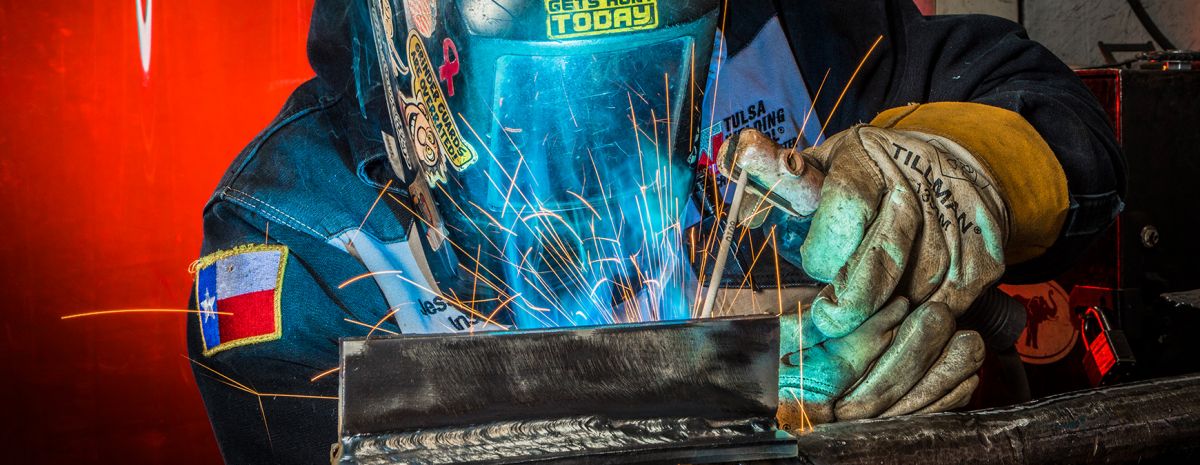All Regarding Welding: Trick Insights Into Techniques and Ideal Practices for Success
Welding includes a selection of strategies, each suited for specific materials and applications. Recognizing these methods, such as GMAW, SMAW, and TIG, is vital for achieving optimal results. Additionally, the ideal equipment and safety practices can not be neglected. As preparation and troubleshooting play vital functions in the welding process, grasping these elements can substantially improve the top quality of the last item. What are the key variables that assure a successful weld?
Understanding Different Welding Techniques
Welding techniques encompass a variety of techniques, each fit to specific applications and products. Amongst the most typical methods are Gas Steel Arc Welding (GMAW), Secured Metal Arc Welding (SMAW), and Tungsten Inert Gas Welding (TIG) GMAW, also known as MIG welding, is prominent for its speed and convenience, making it suitable for slim products. SMAW, or stick welding, is favored for its simpleness and performance in exterior environments, specifically with thicker metals. TIG welding offers precision and control, making it ideal for elaborate job and non-ferrous steels (Montana Mobile Welding and Repair Belgrade). Each method has its unique benefits and factors to consider, enabling welders to choose the ideal method based upon the project's requirements, material kind, and desired end results. Recognizing these strategies is essential for successful welding
Necessary Welding Devices and Tools
While various welding techniques call for particular skills, the right tools and devices are similarly crucial for achieving high quality results. Important welding tools consists of welding equipments, which vary depending on the technique-- such as MIG, TIG, or stick welding. Safety gear, including aprons, helmets, and gloves, assurances safety and security and comfort during the procedure. Additionally, fixtures and clamps help safeguard products in area, making sure accuracy in welds. Consumables like welding rods, cord, and protecting gas are likewise critical parts that influence the high quality of the weld. Additionally, devices such as grinders and cutters help with surface preparation and post-weld completing, adding to a professional result. Buying high-grade tools eventually enhances the efficiency and efficiency of welding jobs.
Safety Practices in Welding
Correct safety and security techniques are vital in the welding industry to protect employees from prospective risks. Welders should use suitable personal protective devices (PPE), including safety helmets with correct shading, gloves, and flame-resistant clothing. Adequate air flow is crucial to decrease direct exposure to dangerous fumes and gases created throughout the welding process. Furthermore, workers need to be educated in the proper handling of welding tools to stop mishaps. Fire precaution, such as keeping flammable products away from the welding location and having fire extinguishers easily offered, are required. Regular examinations of tools and workspaces can help identify potential threats prior to they lead to mishaps. By adhering to these security methods, welders can produce a much safer working environment and reduce dangers connected with their profession.
Readying Products for Welding
Preparing products for welding is an essential step that greatly affects the high quality and integrity of the final product (Fabrication). Proper prep work entails cleaning the surfaces to remove contaminants such as dust, oil, and corrosion, which can jeopardize the weld. Strategies such as grinding, sanding, or utilizing solvents are typically employed to accomplish a tidy surface. Additionally, ensuring that the products fit together well is essential; spaces can lead to weak welds. It's likewise crucial to consider the positioning and positioning of the components, as this will certainly influence the ease of welding and the final end result. Ultimately, choosing the ideal filler product and making sure compatibility with the base steels is important for accomplishing strong, durable welds
Tips for Getting High-Quality Welds
Achieving premium welds calls for interest to information and adherence to ideal methods throughout the welding process. Proper joint prep work is essential, making certain surfaces are totally free and tidy from impurities. Selecting the suitable filler material and welding technique based on the base steels is vital for suitable bonding. Maintaining constant traveling rate and angle while welding can protect against flaws and advertise uniformity. In addition, regulating warmth input is essential; excessive warm can result in bending and damaged joints. If essential, regularly inspecting the welds during the procedure permits for prompt adjustments. Using proper post-weld therapies, such as cleaning and tension alleviation, can improve the resilience and honesty of the weld, inevitably guaranteeing a successful result.
Troubleshooting Usual Welding Issues
Welding often presents difficulties that can influence the quality and integrity of the end product. Usual issues such as porosity, inconsistent weld grains, and getting too hot can occur, each needing specific repairing strategies. Comprehending discover this info here these issues is crucial for welders to boost their abilities and attain ideal outcomes.
Porosity Issues Described
Porosity can often be overlooked, it stays a vital issue in welding that can compromise the honesty of a finished item. Porosity refers to the existence of tiny gas pockets within the weld bead, which can lead and deteriorate the joint to early failing. This trouble commonly develops from contaminants, dampness, or incorrect protecting gas coverage during the welding process. To minimize porosity, welders must verify that the base materials are tidy and dry, make use of appropriate protecting gases, and preserve regular welding parameters. On a regular basis examining the devices and setting can also assist identify potential concerns prior to they show up in the weld. Addressing porosity efficiently is necessary for achieving solid, resilient welds that satisfy quality standards.

Inconsistent Weld Beans
Inconsistent weld beads can greatly impact the top quality and toughness of an ended up product. Various factors add to this issue, consisting of improper traveling rate, incorrect amperage settings, and irregular electrode angles. When the welder moves as well rapidly, a grain might appear slim and lack penetration, while moving too slowly can trigger extreme buildup. Additionally, using the wrong amperage can result in either undercutting or extreme spatter, both of which compromise weld integrity. The welder's method, such as inconsistent lantern motion, can additionally cause unequal bead look. To alleviate these issues, welders must concentrate on maintaining constant, regulated movements and ensuring proper equipment settings to accomplish harmony in their welds. Consistency is vital to achieving trustworthy and strong welds.
Overheating and Warping Issues
Excessive warm throughout the welding process can bring about considerable getting too hot and warping problems, influencing the structural integrity of the workpiece. These issues usually show up as distortion, which can endanger alignment and fit-up, making more assembly testing. Factors contributing to overheating consist of the selection of welding parameters, such as voltage and take a trip rate, in addition to the kind of material being bonded. To reduce these concerns, welders need to keep regular traveling rate and proper warmth input while keeping an eye on the work surface temperature level. In addition, pre-heating or post-weld warmth treatment can assist alleviate stresses brought on by rapid air conditioning - Montana Mobile Welding and Repair. Regular evaluation and adherence to best techniques are important in avoiding getting too hot my explanation and ensuring the longevity and integrity of welded structures
Regularly Asked Inquiries
What Are the Profession Opportunities in the Welding Market?
The welding industry uses diverse occupation opportunities, including settings as welders, examiners, engineers, and teachers. Professionals can operate in production, building, aerospace, and auto markets, gaining from strong demand and competitive salaries in various functions.
Just How Can I Improve My Welding Speed Without Sacrificing Quality?
To boost welding rate without giving up high quality, one ought to exercise effective strategies, maintain equipment, optimize setups, and enhance hand-eye control. Routine training and seeking comments can additionally significantly add to accomplishing quicker, top notch welds.
What Certifications Are Offered for Welders?
Countless certifications exist for welders, consisting of those from the American Welding Culture (AWS), the National Facility for Building And Construction Education and Research (NCCER), and different industry-specific organizations. These credentials enhance employability and show skill efficiency.
Exactly How Does Welding Affect the Qualities of Metals?
Welding affects the residential properties of steels by changing their microstructure, which can result in modifications in hardness, stamina, and ductility. Warm input and cooling rates during the process greatly impact these product characteristics.
Can I Bonded Dissimilar Metals Together?
